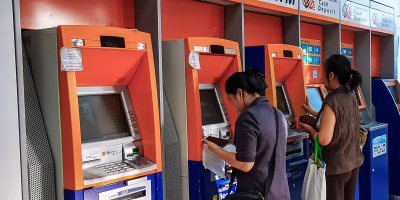
Ford is using blockchain to bring more transparency into its new environmental projects. Source: Shutterstock
Ford is using blockchain to bring trust to its new environmental projects
AUTONOMOUS vehicles might excite automakers quite a bit, but many companies are also working with government bodies on exciting environmental projects.
Ford, one of the world’s largest automakers, is working closely with authorities in Europe to build vehicles that are environmentally sustainable — with an emphasis on tracking the number of “green miles” (zero-emission miles) driven by vehicles.
The technologies underpinning the project, aside from the vehicle’s own hybrid engines, are blockchain and geofencing.
In the context of the trial, Ford sees blockchain as a data security technology that creates permanent time-stamped records of data. Geofencing, on the other hand, helps create a virtual geographic boundary defined by GPS technology.
In Cologne, where the trial is being held, low-emission zones are being introduced to address air quality challenges by discouraging the most polluting vehicles from driving through them.
However, these zones can present difficulties both to the cities implementing and administering them, and to drivers understanding where and when restrictions are in place. That’s where Ford’s geofencing and blockchain technology pilot could help.
Whenever one of Ford’s environment-friendly hybrid engines enters a controlled zone, its electric-drive mode can be triggered and the zero-emission driving green miles are documented.
The emissions mode and time that vehicles enter or leave a controlled zone are recorded to a secure distributed ledger – a blockchain – ensuring emissions data is safely stored and shared among relevant parties including city authorities and the vehicle or fleet owners.
Further, the company sees the dynamic geofencing technology helping vehicles adapt, in real-time, to changes in emissions zones.
For example, a city might decide to adjust the perimeter of a controlled area or create new ones based on local weather or environmental conditions. Ford’s hybrid vehicles can then automatically switch to the low-emission mode when they enter these updated zones.
Overall, it’s interesting to see blockchain technology being used in real-world scenarios, especially in sectors other than financial services.
“The blockchain technology we are testing here in Cologne enables secure, tamper-proof tracking and logging of vehicle emissions records,” said Ford-Werke Management Board Chairman Gunnar Herrmann.
“Security, trust and transparency of emissions data are of paramount importance to all stakeholders in this project, and are key for our vision of cleaner air in the city.”
In the future, if the trial is ported to other parts of the world, it is expected that the blockchain will continue to guarantee trust and transparency — serving as an effective tool or use case to the auto industry and various government bodies.
READ MORE
- Aviation giant Airbus turns to chatbots to engage top talent
- In the digital economy, MoneyGram focuses on getting the basics right
- How FedEx uses technology to delight customers in the digital era
- FedEx Express/Ground collaboration will improve last-mile delivery
- Growth is fabulous: Why Foodpanda’s app and team are growing rapidly


